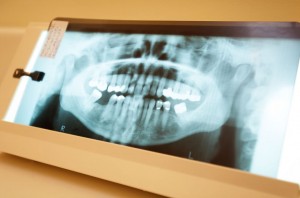
Mind Your Body, the weekly health supplement of the Straits Times, recently spoke with Dr Neo Tee Khin (Prosthodontist) and Dr Helena Lee (Periodontist) of Specialist Dental Group about what they saw as Dental Diseases of the 21st Century.
The two dental specialists summed up the biggest dental issues of the 21st century as being:
- Tooth decay;
- Gum disease;
- Root caries; and
- Bruxism
I. Tooth Decay (Dental Caries)
At Specialist Dental Group, we have noted a rising trend in the number of teenagers with multiple tooth decay (dental caries). This was not previously seen due to the existence of fluoride in our water which imparts a certain degree of ‘protection’ against dental decay.
Possible reasons for the rise in tooth decay include:
- The increased tendency to skip regular meals and resort to frequent snacking while working, studying or surfing the internet.
- Snacks are usually high in refined sugar which results in a high concentration of caries-causing bacteria in the mouth and hence increased incidence of tooth decay.
- Such food may also be sticky, thus lengthening the time the sugar is in contact with the teeth.
- People increasingly have less time for tooth brushing and some teenagers have been known to fall asleep after eating.
- Tooth brushing is important in removing food that sticks to the teeth and also reduces the caries-causing bacteria count in the mouth. When a person is asleep, salivary flow reduces and is therefore less effective in flushing out the sugars in the mouth.
II. Gum Disease (Periodontitis)
The lack of proper tooth brushing may also cause gum disease or periodontitis. Periodontitis is an infection of the gums, bone and supporting tissues that holds the teeth in place. The disease progresses slowly and is often not noticed by the lay person because it is painless in the early stages.
Left untreated for many years, the supporting bone and fibres around the roots are lost and teeth become loose. At the more advanced stages, tell-tale signs like frequent gum abscesses occur and gums bleed easily. Perfectly good teeth are thus lost through gum disease. Gum disease is also increasingly found in younger people and not just the older generation. This could be attributed to the changing lifestyles as mentioned above.
The Adult Oral Health Survey 2003 conducted by the Singapore Health Promotion Board found:
- Only 43% of the population was aware of the cause of gum disease and that gum disease could lead to tooth loss.
- The practice of dental flossing was reported by only 33% of those surveyed.
- Only 46% of the adults visited the dentist at least once a year.
Gum disease has been linked to general body health issues such as heart disease, diabetes and stroke. A patient who has uncontrolled gum disease may also find his diabetes difficult to control. Diabetes also has a slow and silent onset. In the untreated diabetic, the destruction of gum disease is more aggressive and progresses faster. Getting gum disease diagnosed and treated also contributes to better management of blood sugar levels in diabetics.
Prevention is always better than cure; this preventive care is best started during childhood.

III. Root Caries
With people living longer and keeping their natural teeth longer than ever before, elderly adults will have more teeth that are susceptible to root caries (in addition to gum disease as described above). Root caries progress quickly due to the relatively soft nature of the root surface.
A study conducted by the National Institute for Dental and Craniofacial Research showed that over half of older adults have decayed or filled root surfaces.
Risk factors associated with the high prevalence of root caries among older adults include:
- decrease salivary flow or xerostomia,
- exposure of root surfaces due to periodontal (gum) disease,
- chronic medical conditions,
- radiation treatment for head and neck cancer,
- physical limitations, and
- diminished manual dexterity due to stroke, arthritis, or Parkinson’s disease,
- cognitive deficits due to mental illness, depression, Alzheimer’s disease or dementia,
- Sjögren’s syndrome (an autoimmune disease),
- diabetes,
- poor oral hygiene,
- multiple medication use, and
- changes in dietary habits.
One or more of these risk factors or life changes, which are more common among older adults, can increase root caries in an individual who has not had dental caries for many years.
IV. Bruxism
In a fast-paced, highly stressed population, there are also increasing numbers of people who brux (grind) and clench unconsciously. The teeth show signs of wear that is advanced for the person’s age.
Fillings may also break off more often. With excessive bruxing, some teeth may fracture. If the fracture stretches deep through the nerves and roots of the tooth, it will have to be extracted.
Bruxism can also cause chronic problems with the temporomandibular (jaw) joint leading to TMJ or TMD problems. This is characterized by unresolved facial pain. Common symptoms include pain in or around the ears, tenderness of the jaw, clicking noises when opening the mouth, and headaches or neck aches.
Implications
- Dental caries and gum disease can result in tooth loss with resultant difficulty in chewing food. With fewer teeth, eating healthy food like fruits and vegetables will be a challenge, leading to preference for a diet that is high in sugar and low in nutrition (e.g., cakes and mashed potatoes).
- A group of dental experts concluded in 2002 that elderly patients with no teeth that are wearing ill-fitting dentures may be at risk for malnutrition. They recommended regular dental visits to the dentist and in some cases, the use of dental implants to restore chewing function.

Tips on Prevention
Gum disease and dental caries are both painless in their early stages. The symptoms may be relatively mild e.g. discomfort or sensitivity on biting and drinking cold fluids. When pain occurs, the destruction of tooth, gums bone and its supporting structure may be irreversible resulting in ultimate tooth loss. Therefore, it is beneficial to take some basic steps to prevent dental problems
- Brush twice a day with a fluoride toothpaste;
- Floss or use an inter dental cleaner once a day;
- Eat a balanced diet;
- Limit eating and drinking between meals. If there is a need to eat, choose nutritious food such as fruits instead of snacks high in refined sugars;
- Visit your dentist regularly every six months;
- In children, dental sealants may be useful to prevent decay on adult teeth.
Due to the proactive measure by our dentists, dental associations and the Health Promotion Board, public awareness about dental problems is on the rise and will continue to increase. Hopefully this will translate to a reduction in the number of teeth lost due to tooth decay, gum disease and root caries.
For more information on options to replace missing teeth, click here. To find out about gum treatment, click here.





